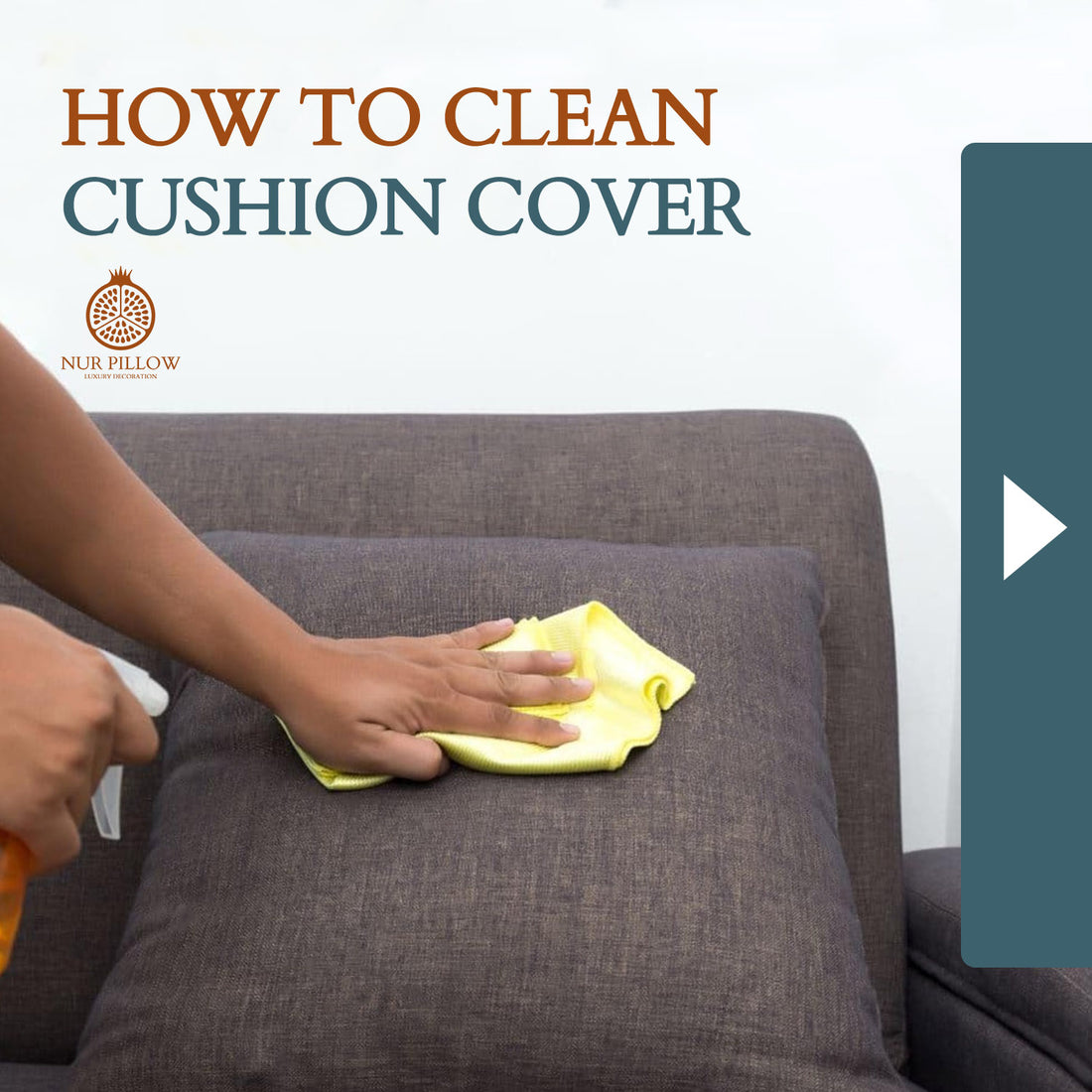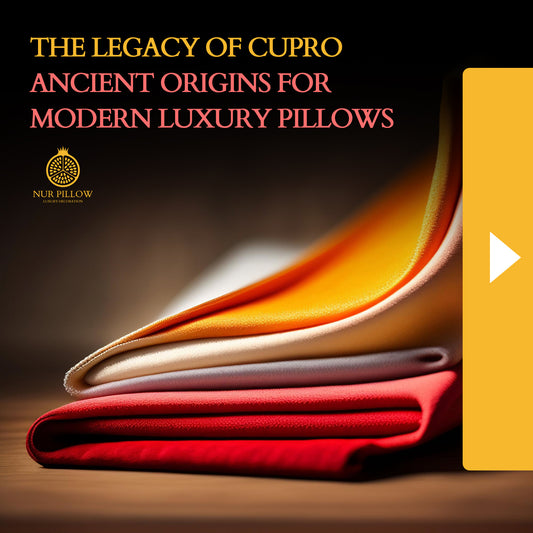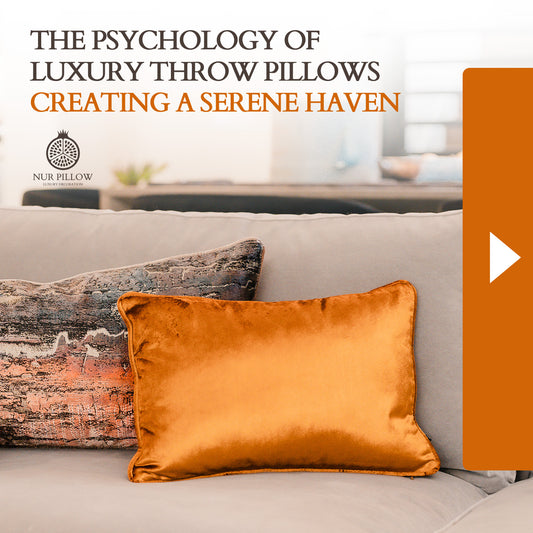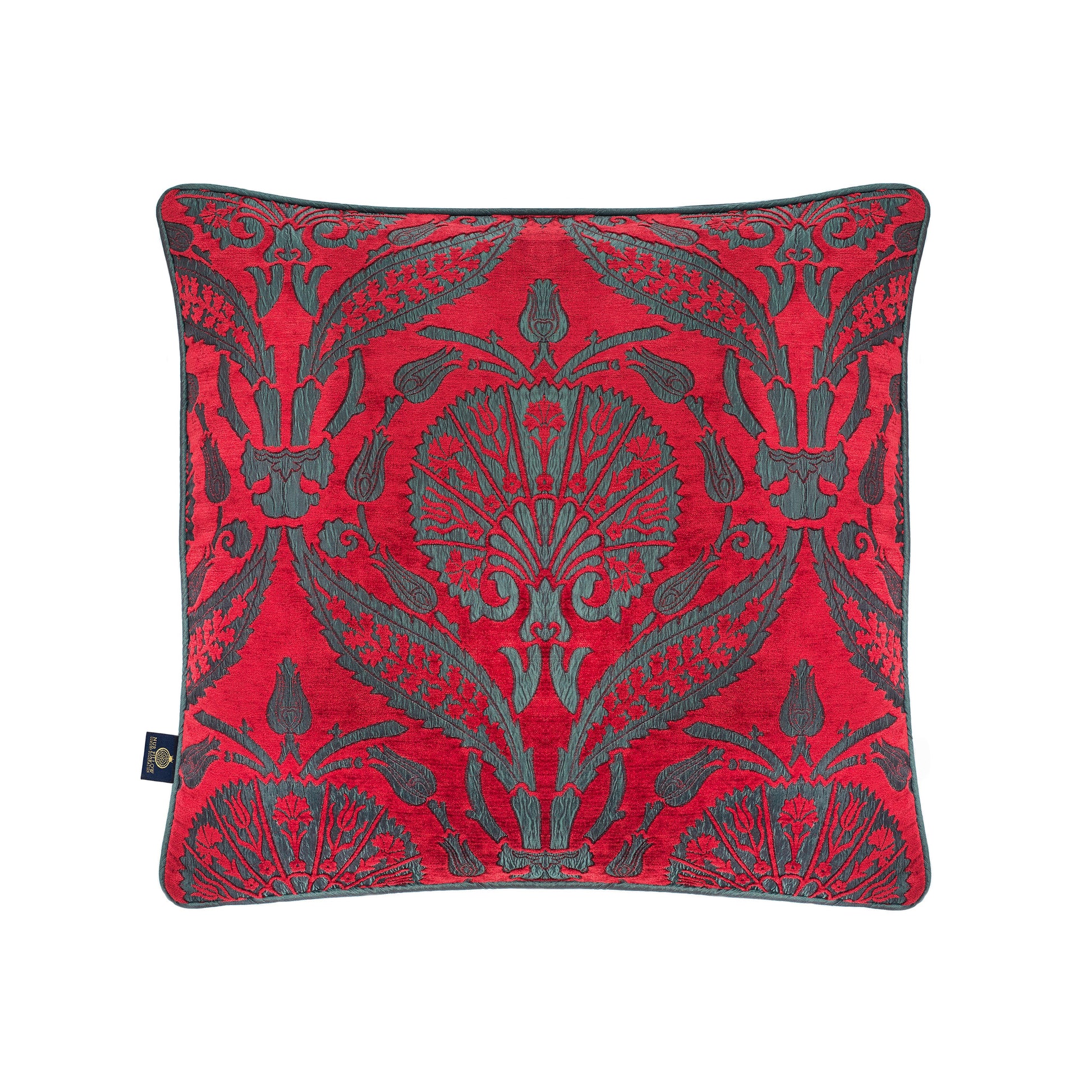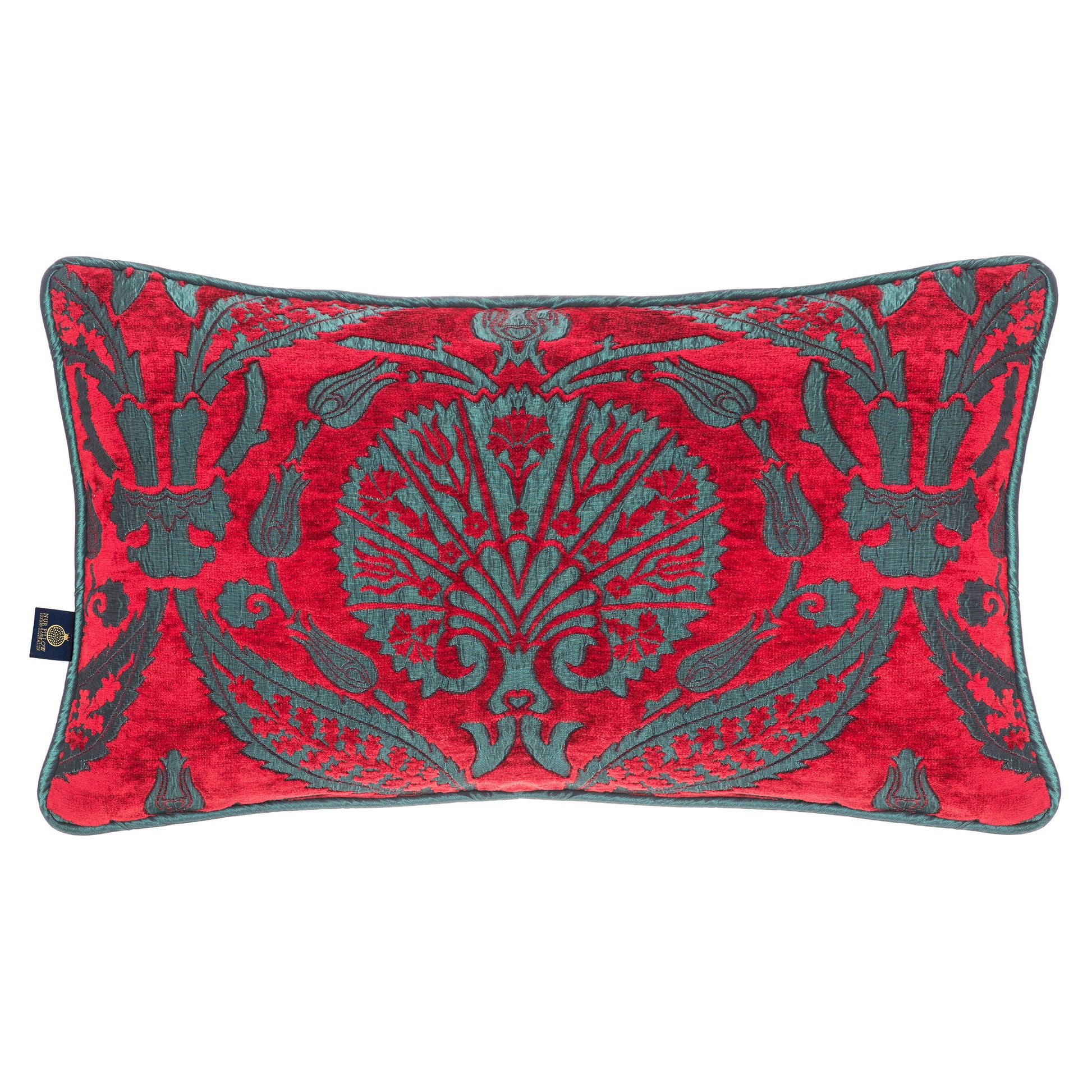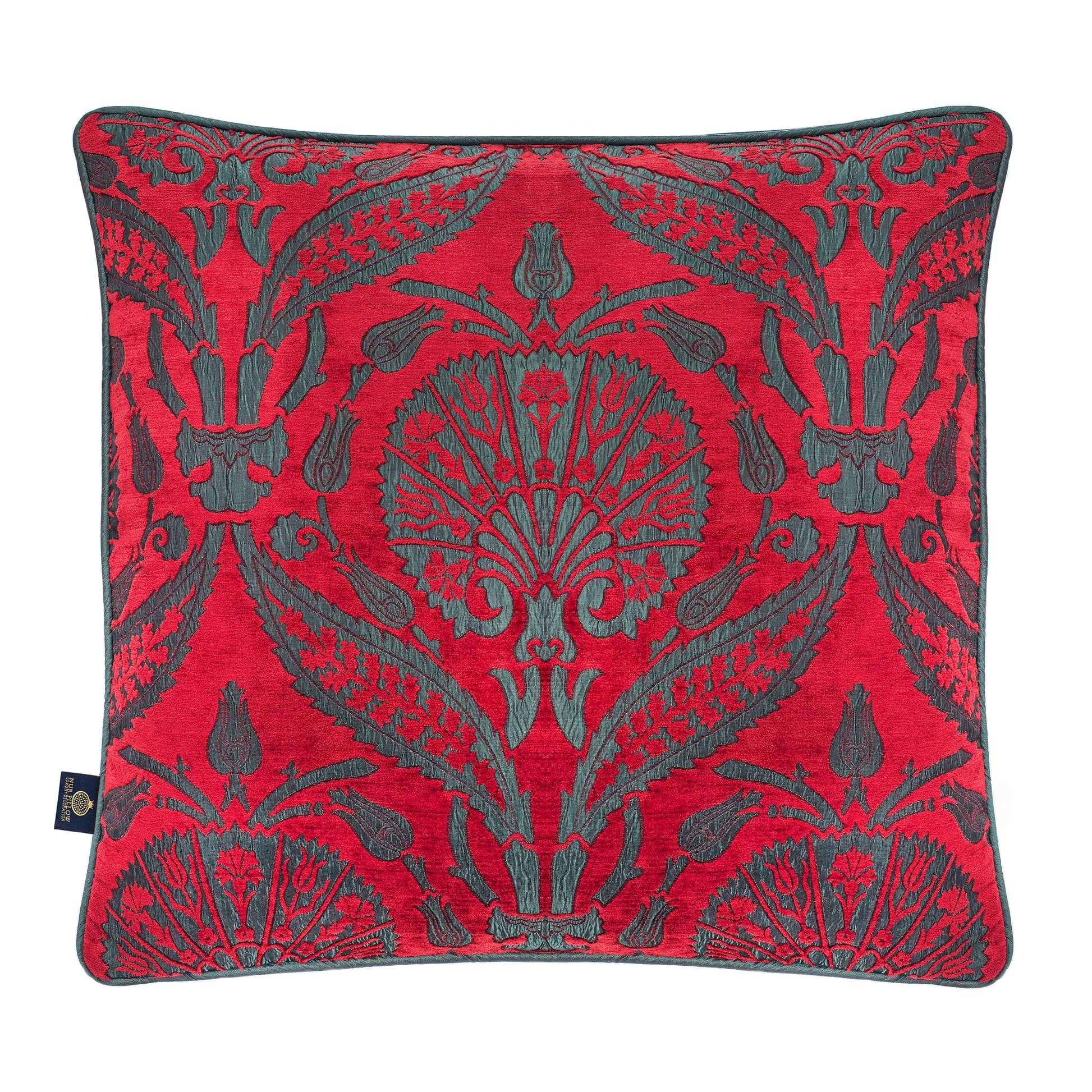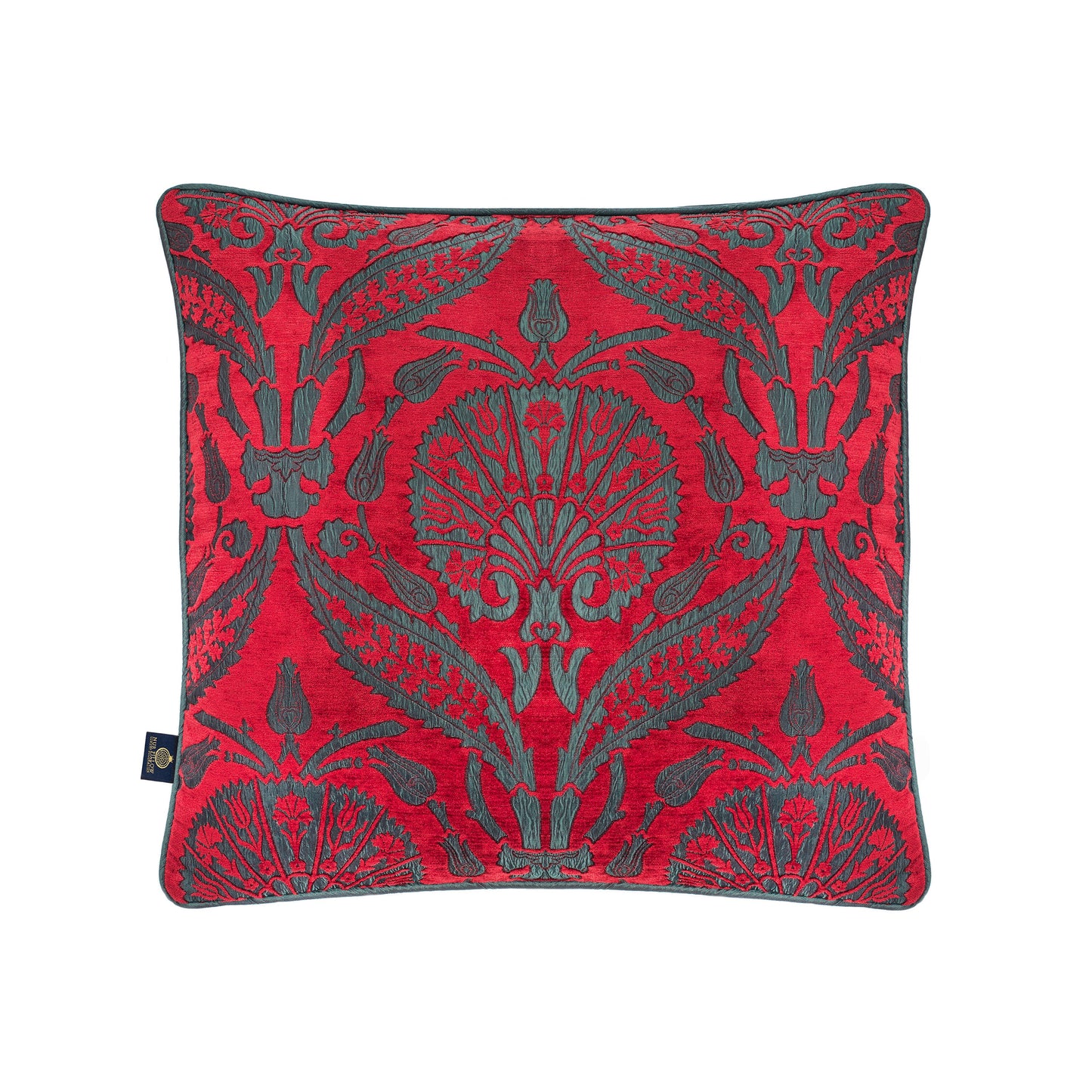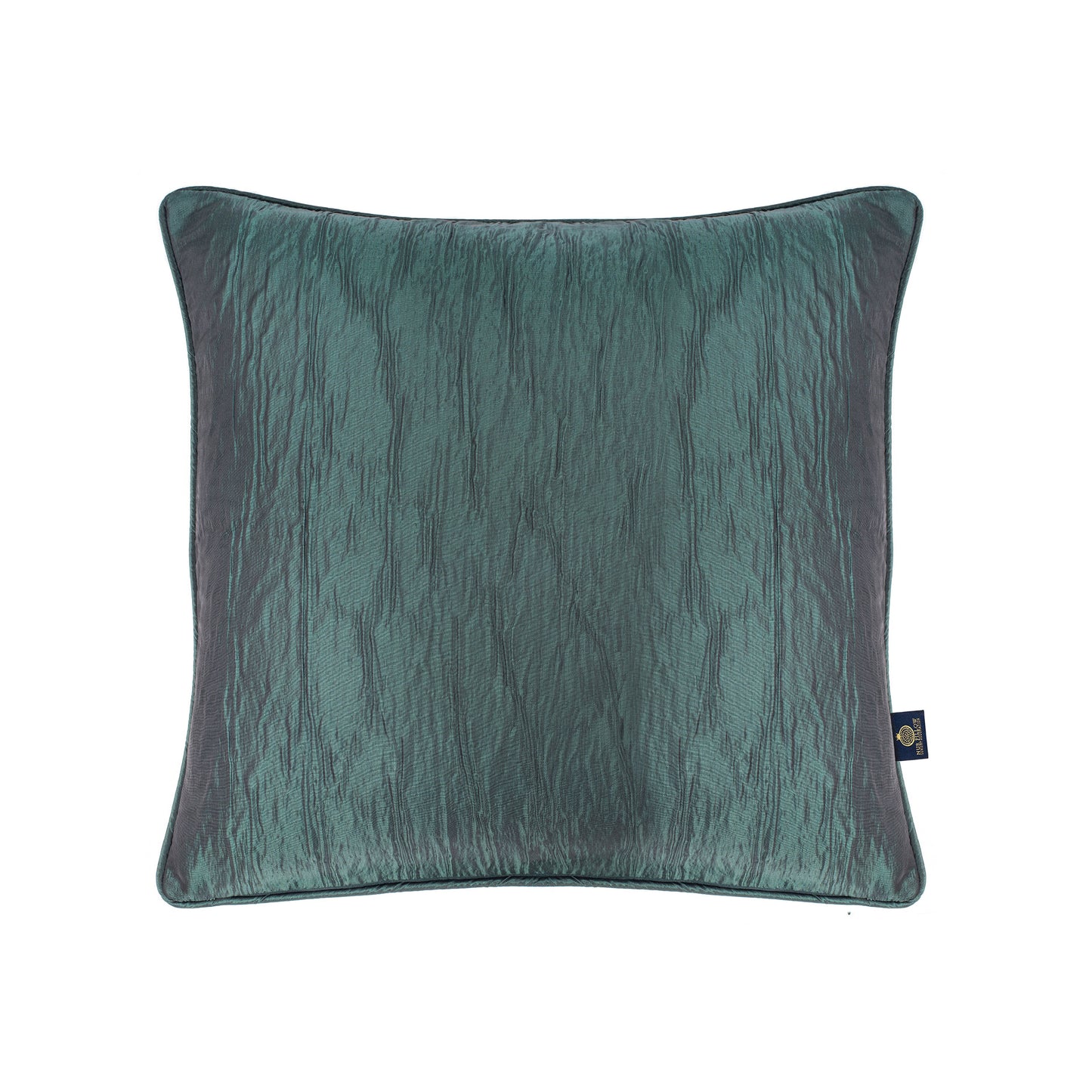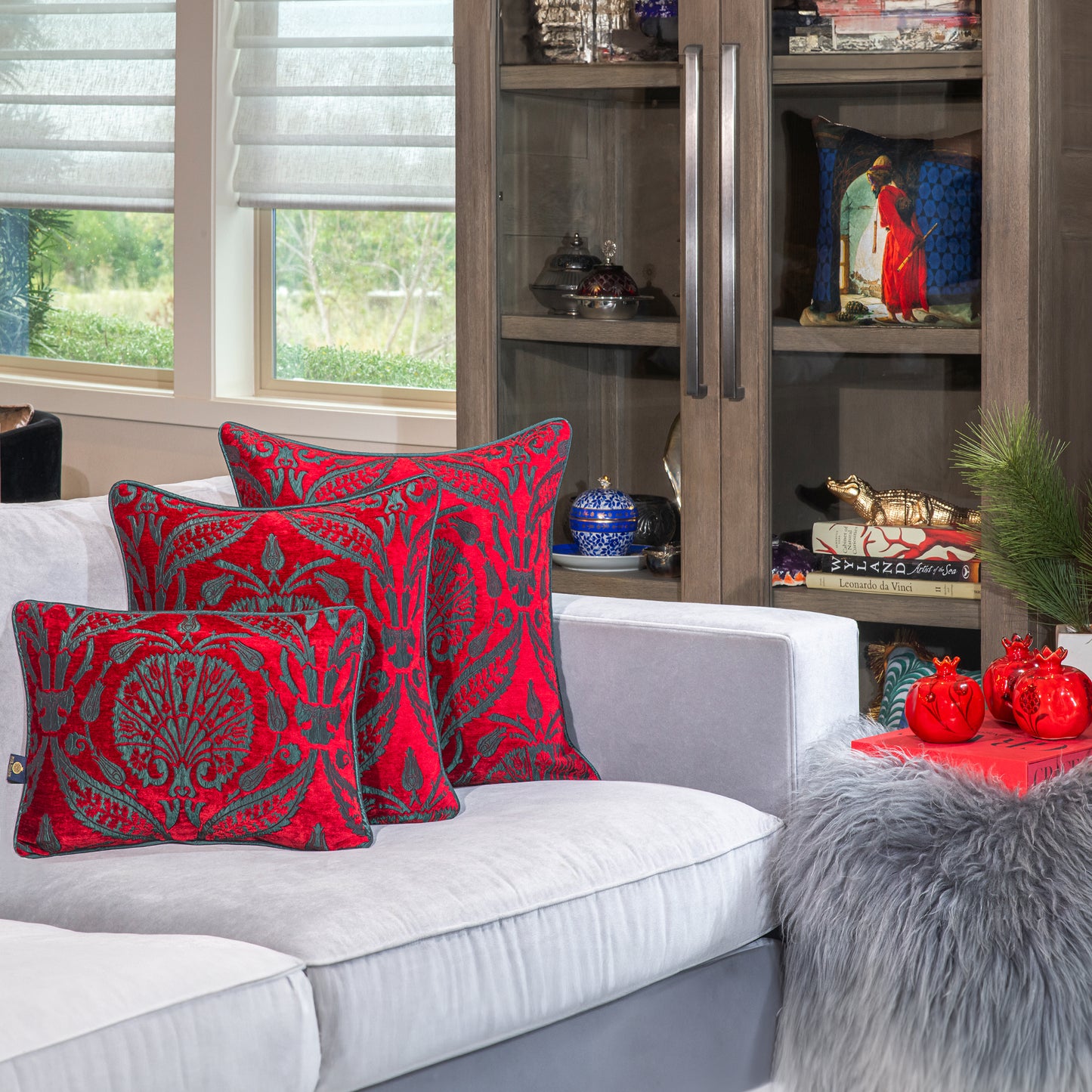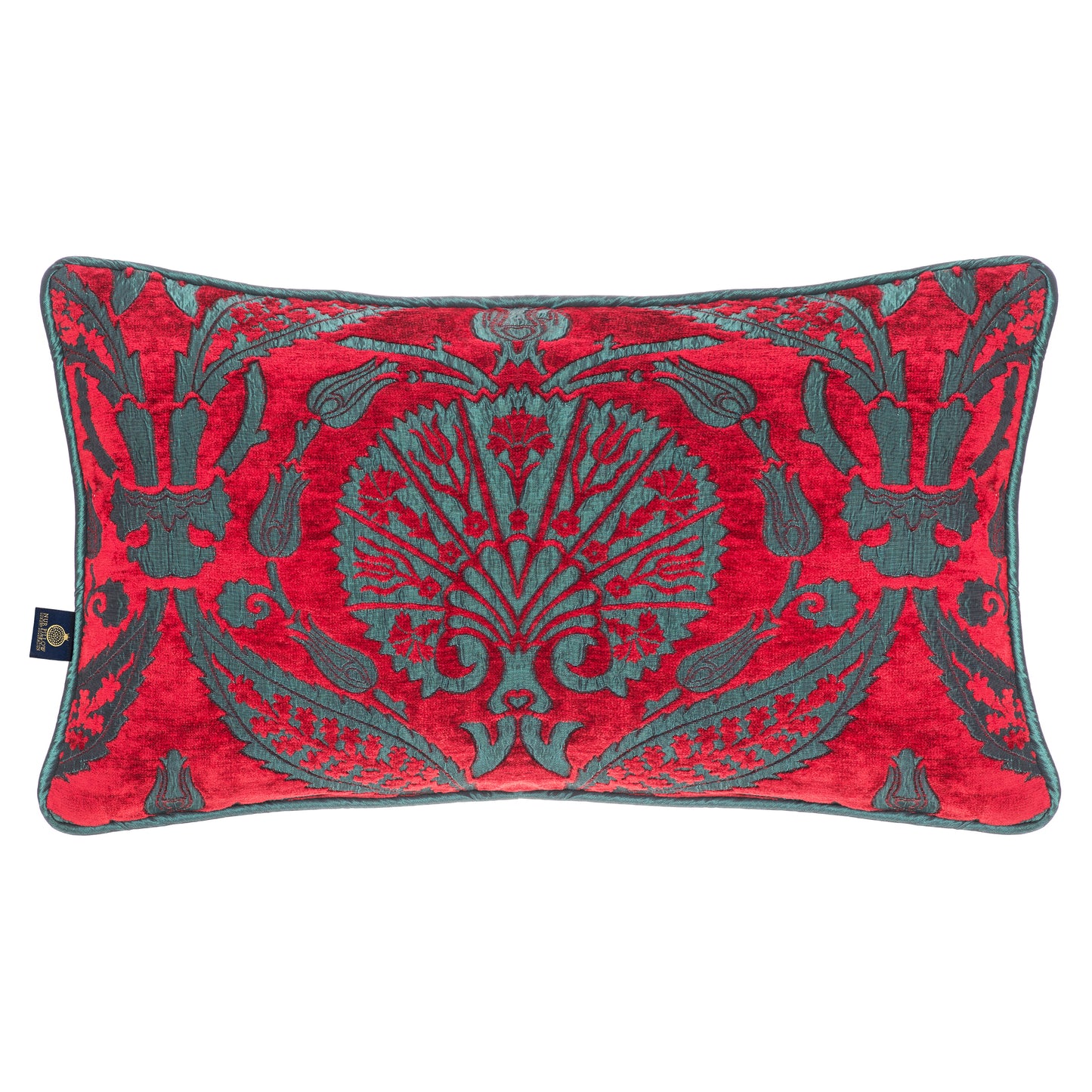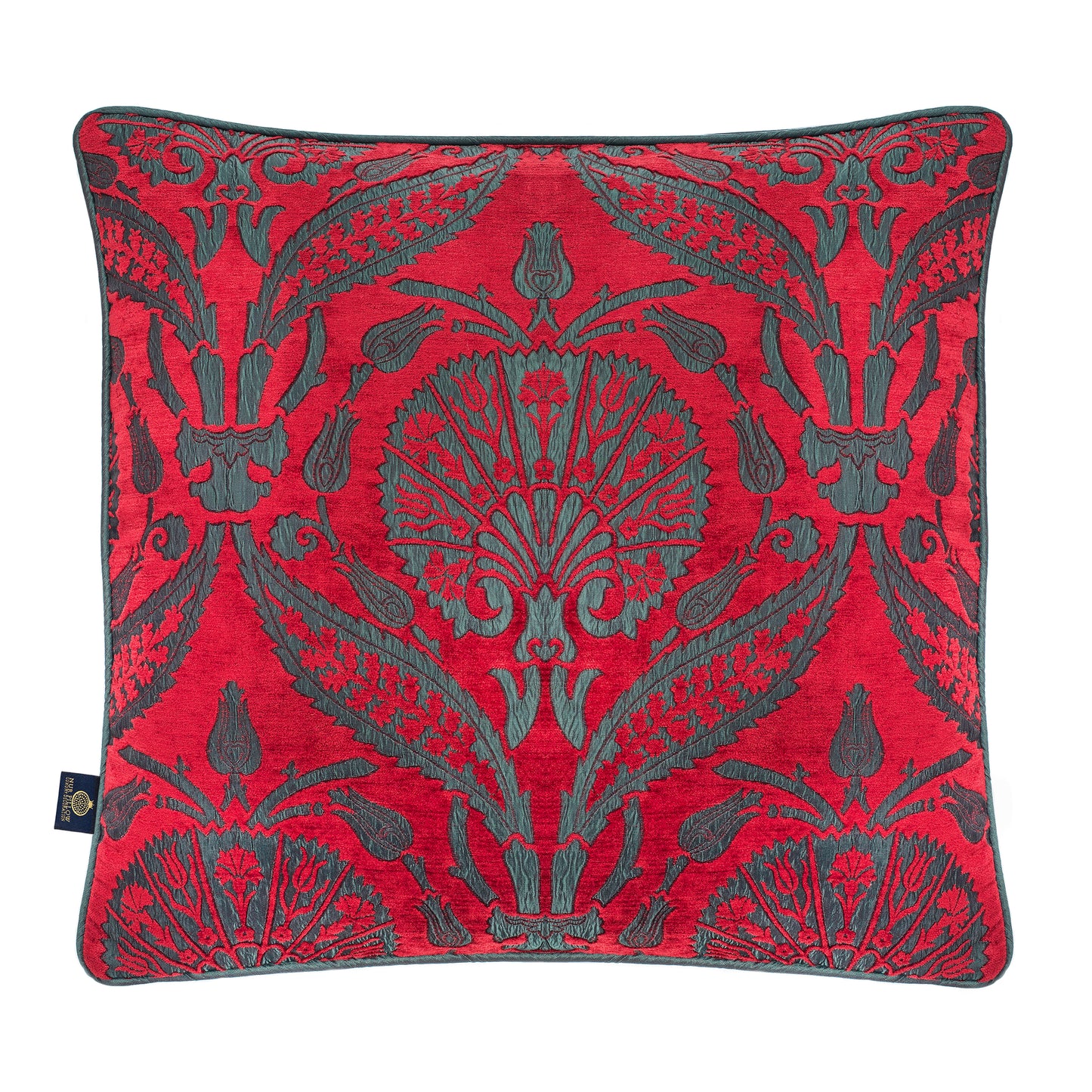As Nur Pillow, we want you to like spending time in your living room. And as everyone knows, aside from your bed, your sofas are most certainly one of the most used pieces of furniture in your home. With most household gatherings taking place on living room seating, it's one of the simplest locations in your home to accumulate dirt and stains, whether from a spilled glass of wine, youngsters playing on the furniture, or the paws of your four-legged pals. Not to mention that if upholstery, such as couches, is not cleaned on a regular basis, it can collect undesirable scents.
However, unlike linen, which can be readily washed, sofa cushion covers might be a different story. Couch cushions may sometimes be washed without the coverings, while others require spot cleaning with a light detergent.
So let’s start the cleaning! Just scroll and find the best tips on how to clean cushion covers. You can also visit our website nurpillowdesign.com and find out more about cushion cover care.
How Often Should You Clean Couch Cushion Covers?
The frequency with which you clean your sofa cushions is determined by how frequently you use the couch and how often you deal with stains. Typically, you should wash sofa cushion covers every six months or so, but if you have high-traffic living rooms, you may need to increase your cleaning frequency.

Moreover, many clean-content-creators on social media have stated that "the general rule of thumb suggests that cushions be vacuumed weekly to eliminate dust and light filth as a method of extending the good looks of the seats." Furthermore, cushions should be flipped and fluffed every month to maintain the seat core's integrity and avoid excessive wear and wrinkling of the cover fabric.
How Often Should You Wash the Pillow Itself
Cushions in the living room are available for everyone in the household to use. Therefore some accidents might happen, like spilling some beverage, food sauce, etc. And sometimes, even if you wash the cushion cover, you cannot always be sure the cushion itself is clean. So you might want to wash it as well.
Since they are open to everyday use, the stain that doesn’t get to be cleaned up right away, might cause molding. Dealing with it as soon as possible is critical since mold or mildew can destroy the cushions. Mold and mildew cannot be removed from soft, porous materials. Although washing the pillow is dangerous, the alternative is to replace the sofa. So we recommend you be aware of the stains on your cushion cover to alert you about what goes inside.

For emergencies like this, you can always keep a couple of cushions on the side. Having backup covers can save you time. Visit our website nurpillowdesign.com and check out our luxury cushions with the best deal you can find!
Can Couch Cushions Be Washed In Washing Machine?
Can you clean a cushion in the washing machine? The objective here is to wash the pillow without causing any damage to it. Use a front-loading washing machine with a high capacity. Use the delicate cycle and a fine fabric detergent. Allow the cushion to soak in warm water before rinsing and spinning it. If the stain is urine, add 1 cup of white vinegar to the washer.
It is not always possible to wash pillows that do not have zippers. Some pillows just cannot be thrown into the washing machine. If you've spent your money on some lovely scatter pillows, they demand greater attention when it comes to cleaning.
A cushion with no zip might be challenging to clean. The good news is that, in most cases, you should be able just to throw it in the washing machine unless the cover is constructed of a material that should not be immersed in water. In that situation, always try spot removal first, then a freshen-up or hand wash as a last resort.
You can always count on Nur Pillows designs if you want to buy some extra cushion covers with zipper options. We are sure that you will find a similar aesthetic in our products.
How to Clean a Dirty Couch Cushion
Before you start cleaning your cushions, you should assess if the covers are detachable, whether they can be hand washed, if they can be machine washed, or if they can only be spot cleaned. If you know or can establish the brand and model of the sofa, browse online for the furniture manufacturer's care recommendations or look for labels on the upholstery to aid you.
If the cushion label reads "W," it indicates you can use a water-based cleaning, "S" means you can use a solvent-based cleaner, and "WS" means you can use either. If there is an "X," just the upholstery should be properly cleaned.
Nur Pillows makes beautiful, fluffy pillows filled with goose down. Cleaning the cushions is a breeze.

First, use a pillow protector cover, which can be obtained at home goods shops or online, to protect your cushion from dust and skin oil. These coverings are similar to pillowcases, except they feature zippered or buttoned edges and are machine washable. Regularly wash the cover.
When the pillow itself has grown soiled, place it in the washing machine. Wash it on the gentle cycle with a sprinkle of washing detergent. Place the pillow in the dryer with a dryer sheet and let it dry usually.
Punch the cushion a few times with your fists to puff it up and adequately distribute the feathers within. If the pillow is still moist after it comes out of the dryer, place it in the sun to dry.
How to Spot Clean a Cushion Cover
If you have a stain on your cushion and do not want to wash the whole cushion, spot cleaning the stain may be an option for you.
Here's how it's done:
- With a blunt knife, remove any extra solids/liquids from the cushion.
- Blot the stain with a dry microfiber towel to absorb as much as possible.
- Use an appropriate stain remover, such as Vanish Carpet and Upholstery cleaning. Alternatively, dissolve some dish soap in a basin of water and massage it to create foam. Apply the foam to the stain and rub it in carefully.
To get rid of sticky stains caused by things like chewing gum, chocolate, or sticky syrup, press ice into a sandwich bag with a zipper and lay it over the stain until it sets. Then, using the sharp edge of a plastic knife, carefully scrape away the dried material, beginning at the outside edge of the stain and working your way within. If the debris starts to re-soften, put more ice on it and then scrape it again. In the event that a stain is still visible, proceed to use the soapy cleanser described before.
One of the nightmare-ish stains you can find on your cushion is ink. This cleaning solution is located beneath the sink in the bathroom, so you'll need to look there. To begin, use a fresh section of the white cloth towel for each of the blotting motions you do on the pen mark. To remove any trace of ink from the white cloth, continue dabbing. After placing a clean white cloth towel beneath the spot, wipe it with rubbing alcohol while using another clean white towel to press against the stain. It shouldn't take more than a few seconds for the ink to dissolve. Repeat the process of dabbing the stain until there is no longer any ink coming out of the cloth. Dab with lukewarm water, then let it dry naturally. Always do a spot test on an inconspicuous part of the pillow to confirm that the rubbing alcohol will not cause the colors to run before using it over the whole cushion.

How to Wash a Non-Removable Covered Cushion
Because the material of the outside cover is what will define how you can clean your cushion, this is the first thing you need to be sure of before doing anything else. Moreover, if you do not want to deal with any sort of situation, you can always check our cushion cover on the Nur Pillow shopping website nurpillowdesign.com
If your cushion includes a care label, be sure to read and follow it before doing anything else. If it does not, the following is a helpful guide that will explain how to clean each kind of material.
| Silk |
Dry-clean |
|
Velvet |
Dry-clean |
|
Wool |
Dry-clean |
|
Jacquard |
Dry-clean |
|
Leather |
Wipe with a damp cloth |
|
Polyester |
Machine or hand wash |
| Cotton M | achine or hand wash |
Remember that dry-cleaning your non-removable cushion cover is always the safest choice. The next alternative is to hand-wash the whole cushion. Consider a light machine wash if you are certain that the exterior material will not be harmed. Consider spot removal if you have a little stain we explained above.
How to Understand the Best Way to Clean Cushions
We know you shouldn’t have to memorize every material and deep detail of them to keep your house in a clean atmosphere. All the standards for cleaning different materials can be confusing. However, even if you do not have the information about your cushion, you can always check the instructions with the codes. If you do not know the codes, do not worry; we have you covered.
Cleaning code S indicates that the cloth should be dry-washed. Professionals in cleaning suggest using a moderate, water-free solvent or dry cleaning solution for spot cleaning. Avoid using steam or water-based cleaners since they may cause shrinking or stains.

Cleaning code WS indicates that you may use a water-based cleaning chemical in conjunction with a water-free solvent or dry cleaning product. Make cautious not to soak any stains or spots. Professionals recommend using a non-metallic, stiff-bristle brush on pile textiles to make your sofa cushion look like new.
When cleaning code S or WS, clean only in a well-ventilated area and avoid using products containing carbon tetrachloride or other harmful compounds.
Cleaning instructions W denotes that the upholstery can be washed using water-based solutions and is one of the most easily cleaned varieties of fabric. Professionals recommend spot cleaning code W materials using cleaning solutions such as mild detergent or non-solvent upholstery shampoo.
Brush the foam in a circular motion with a gentle brush once it has been applied. When the spot has dried, vacuum it up, and you're done.
According to professionals, cleaning code X is one of the most challenging kinds of fabrics to clean since no foam or liquid cleaning chemicals should be used. Vacuum the cloth or softly brush it with a non-metallic, stiff bristle brush to clean it.
Do not Forget to Dry Your Cushion
Cleaning something always includes water. And if you are cleaning something that can be molded or get damaged due to water exposure, you should plan your drying. Of course, there are drying machines designed to get the water out of cleaned fabric. However, since drying machines can shrink your cushions, we recommend you avoid them.
The dryer is another factor that contributes to the fabric's wear and tears. Instead, hang the cloth in a room with plenty of fresh air to dry it. You may turn it outdoors to let it air out, but you should be sure to keep it out of the bright sunlight, so it doesn't fade. Even if they do, you can always check for the best quality cushion covers on the Nur Pillow website nurpillowdesign.com.
Maintaining the Cushion Cover Clean
Decorative pillows with many beads and decorations that don't have a detachable cover must be treated differently. The cushion's thickness necessitates a spin cycle to remove the extra water, but the delicate decoration screams no. You may keep them looking newer for longer by keeping them on seldom used seats or away from the possibility of body or hair oil contact.
Regular vacuuming with an upholstery attachment helps, as it does with other cushions, but it has limits. Even with the finest care, an elaborate cushion will eventually become worn. Then it's time to get out of the sewing machine. Gently tear the seam on one side using a seam ripper.
Beads are simpler since they may be emptied from a little hole. Hand wash the cushion cover and seal the opening with a slip stitch. It is also possible to replace the filling at this time. The greatest approach to reduce the need to wash your cushions is to fluff and vacuum them often. Always save the cleaning instructions on your phone or an index card so you may refer to them when you need to remind yourself how to care for and clean your cushions.

